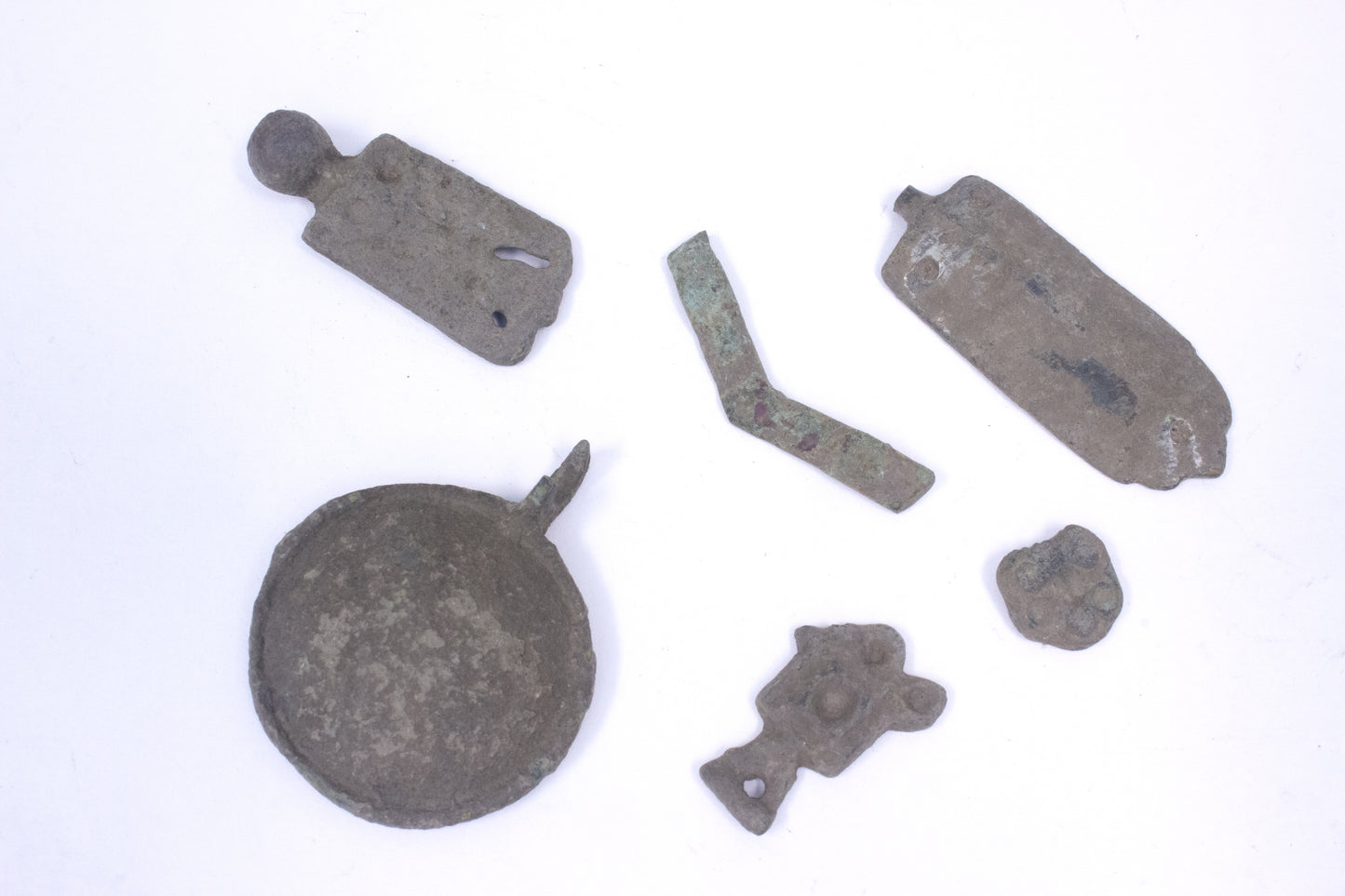
This interesting lot contains a mixture of personal and religious artifacts from Kievan Rus' including buckles, earrings, and crosses. Exposure to the elements over the centuries has left the items rusted, but no less culturally significant to telling the story of a long past society that still leaves its mark on various countries to this day. In all, there are fifteen items included in this set.
The Origins of Kievan Rus
Kievan Rus' was the name of a medieval entity based in what is now the modern-day states of Ukraine, Belarus, and Russia that existed roughly from the end of the 9th century to the middle of the 13th. Though politically disunited at times, the powerbase of Kievan Rus' remained rooted in its capital city, Kiev. The majority of its population is thought to have been formed by East Slavs, a migrating ethnic group that settled much of Eastern Europe and embraced a largely agricultural and sedentary form of society, particularly in comparison to other contemporary groups who dominated eastern Europe and the steppes beyond such as the nomadic Khazars. Central to the founding mythology of the Kievan Rus' state, however, was the arrival of Viking raiders and traders from Scandinavia who traversed eastern Europe's many prominent waterways to capture towns and settle in new lands.
As described in the Primary Chronicle, a prominent Kievan Rus' historical work created in the 12th century, Viking raiders came to the lands that would form the territory of Kievan Rus', and, owing to their great power and authority, were invited by the local Slavic people to rule so that they could wrest control of an otherwise lawless territory. From the invitation of these Viking (also called Varangian) kings would come the establishment of a powerful dynasty known as the Rurikid dynasty after its mythical founder, the conqueror Rurik. The question of how much attribution to give to Scandinavian settlement in Kievan Rus' for creating the structure that would become the powerful medieval kingdom is a controversial one, and one that has been discussed by historians for decades. Archaeological evidence does show an abundance of Scandinavian activity across eastern Europe including the presence of robust Viking settlements, however, demonstrating total Viking hegemony over the region is a more difficult question to answer. Regardless, what does seem to be apparent is that whatever the culture of its founders, within a century or two, the culture of Kievan Rus' had come to constitute something new entirely.
The Christianizing of the Rus
Like its foundation, the Christianizing of Kievan Rus' was a process whose historical understanding has been built upon centuries of mythmaking and political intrigue. Certainly, as a great crossroads of trade between the Baltic Sea in the North and Anatolia and the Iranian Plateau to the South and East, the lands of Kievan Rus' had also been a crossroads for religious ideas for a long time, from Norse paganism to Byzantine Christianity and Islam. That said, it is important to remark that in the medieval period, as much as religious belief could manifest genuine mass conversion, it was also a powerful political tool. For the religious societies bordering Kievan Rus', sponsoring its conversion from pagan belief towards organized religion offered the possibility for a highly beneficial arrangement, opening the door to better trading connections and favorable political alliances.
To this end, though the story of Grand Prince Vladimir I of Kievan Rus' conversion to Orthodox (Byzantine) Christianity is almost certainly fictional, it does serve as a metaphor for the position of Kievan Rus', who, seeking to adopt a religion that could help unify their multicultural and disparate territory, were figuratively presented with a variety of options including Judaism as with the Khazars, Latin Christianity as with the Holy Roman Empire, Orthodox Christianity as with the Byzantine Empire, and Islam as with Abbasid Caliphate. Hence, with Vladimir's conversion to Christianity in the late 900s CE, Kievan Rus' entered a new phase in its history, both in the sense of how it placed itself amongst others in the medieval world, but also culturally as it came to incorporate a new pillar into its multicultural identity.
Bibliography
- Raffensperger, Christian. Reimagining Europe: Kievan Rus' in the Medieval World. Cambridge: Harvard University Press, 2012.
- Riasnovsky, Nicholas V., and Mark D. Steinberg. A History of Russia. Oxford: Oxford University Press, 2019.























